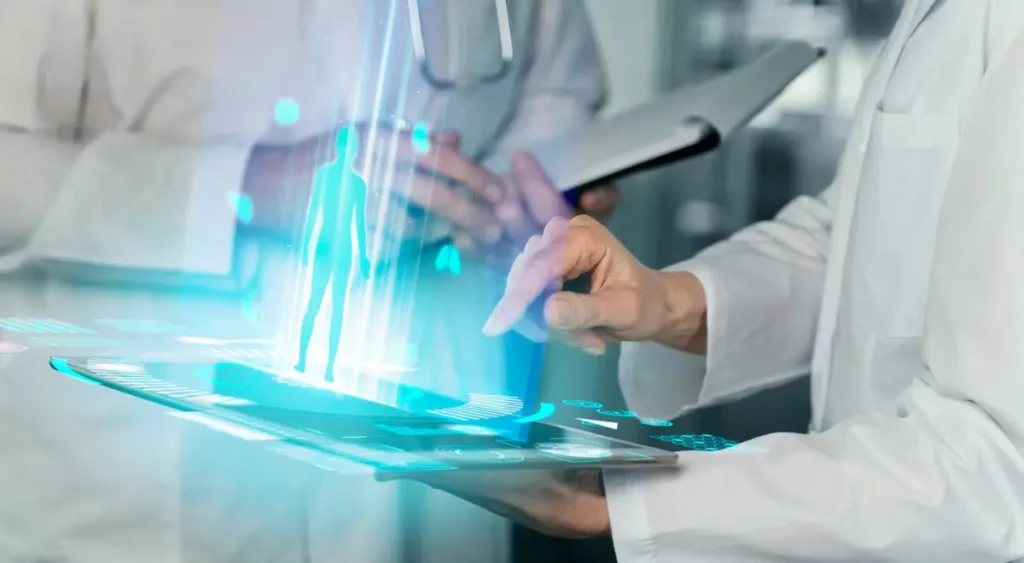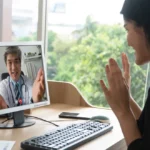Trends Shaping Patient-Centric Design in RPM Platforms

Remote Patient Monitoring (RPM) platforms are evolving to put patients first. From intuitive design and accessibility to AI-driven personalization, these trends ensure technology enhances care, engagement, and outcomes while reducing provider burden.
Trends in remote patient monitoring (RPM) are reshaping care delivery. From intuitive interfaces to personalized engagement tools, these advancements are making RPM platforms more patient‑friendly, improving satisfaction, and driving better health outcomes across different care settings.
Over 75% of healthcare providers report that poor user experience in RPM platforms reduces patient engagement, leading to higher dropout rates and lower adherence to care plans. As remote patient monitoring (RPM) continues to expand, a patient-centric design approach is crucial for ensuring usability, accessibility, and long-term adoption.
The emergence of Remote Patient Monitoring (RPM) platforms is improving the way remote healthcare is delivered to patients, along with providing healthcare providers with the convenience of monitoring their patients’ health outside of traditional clinical settings. The combination of wearables, mobile apps, cloud monitoring platforms, and remote monitoring devices allows providers to track a multitude of health metrics, including heart rate, blood pressure, glucose levels, and oxygen saturation, in real-time.
Although all these health technologies are greatly improving health outcomes and patient engagement, the usability and design of an RPM platform play a crucial role in delivering achievable goals, acceptance, and sustainability in the healthcare industry.
Patient-centric design is a simple yet effective approach that helps identify the needs, wants, and capabilities of RPM software that is focused on achieving the foremost goal of patient engagement. When it comes to remote patient monitoring, the patient-centric design trends refers to user-friendly and easy to navigate platform, tools, and devices that are focused on improving medication adherence and health outcomes.
In this blog, we’ll focus on the need for patient-centric design in RPM, the trends affecting their adoption, and how these design trends create a better experience for patients.
Table of Contents
ToggleThe Importance of Patient-Centric Design in Remote Patient Monitoring
A study by the American Medical Association (AMA) found that RPM platforms with simplified user interfaces increased patient adherence rates by 40%, reducing hospital readmissions significantly. According to a 2023 Harvard Medical School report, AI-driven remote monitoring improved chronic disease management by 30%.
Today’s healthcare technology prioritizes efficiency, real-time data processing, and seamless patient monitoring for providers. RPM platforms can only deliver effective results if they are integrated seamlessly into a patient’s life and healthcare provider’s existing system. If they are difficult to use, they’ll likely be rejected by a patient and simultaneously a healthcare provider.
Patient-centric design means, the utmost focus of the platform is on meeting the patient’s needs and experiences, which in turn keeps the patients engaged, reduces the risk of errors, improves treatment adherence, addresses accessibility, and empowers them to take charge of their health. Some of the key objectives of a patient-centric RPM platform include:
- Supports patient empowerment: RPM platforms provide patients with access to their health information and encourage them to take control over their healthcare journey by keeping them regularly updated via calls/ SMS with care staff
- Increases patients’ satisfaction: Easy to integrate and access user-friendly medical monitoring devices enhances the patient’s experience with the technology and healthcare providers.
- Decreases the burden on healthcare providers: By making sure the patients can access the RPM tools and record their vitals on their own, it saves providers with time and efforts, thereby allowing them to concentrate on delivering quality care. When patients use the device, readings are transmitted and recorded in the platform within 60 seconds of device use.
Discover the latest RPM design trends focusing on patient-centric care.
HealthArc’s platform enhances engagement with intuitive UX, personalized goal setting, inclusive accessibility, multilingual support, and empathetic UI. Foster trust, boost adoption, and improve health outcomes for diverse populations with innovative remote patient monitoring solutions.
Key Trends in Patient-Centric Design for RPM Platforms in 2025
As RPM platforms keep evolving with the technology, below are some key trends that are emphasized on increasing user experience, usability, and patient outcomes:
- Streamlined User Interface (UI): One of the main barriers preventing success in RPM platforms is the complicated user interface. Multiple dashboards, complicated instructions, or infinite steps to complete a single action may discourage a provider from using the platform.
Patient and provider-focused RPM platforms, like HealthArc, come with clutter-free user interfaces (UI) that are easy to use, include simple layouts, large text that is easy to read, colors that stand out against backgrounds, and simple navigation with buttons that are clearly labeled and understood. Other than this, some other aspects of a user-friendly RPM interface include:
-
- Readable fonts: Text within the platform must be in easy to view font and must be readable by all, including those with visibility impairments.
- Voice assistance: Audio instructions or chatbots can assist patients who may not be able to read or understand how the platform works.
- Customization options: Allow providersto personalize the interface according to their choice, such as changing font size or choosing color schemes.
- Integration with Wearable Devices: While an intuitive UI enhances patient adoption, seamless wearable integration ensures real-time health tracking without added complexity. Modern wearable devices have proved to be the key driver behind RPM’s success as they allow patients to collect a wide range of health metrics in a convenient way. Wearable devices like AI-powered smartwatches, continuous glucose monitors (CGMs), and ECG-enabled wearables are revolutionizing patient monitoring. However, interoperability remains a key challenge. A patient-centric RPM platform must integrate with the wearables that are easy to set up and use.
HealthArc’s RPM platform supports cross-device compatibility, ensuring seamless integration with Wi-Fi-enabled and cellular medical devices. Some of the advantages of device integration in RPM include:
-
- Continuous monitoring: Providers can monitor their patients anytime and from anywhere and can act upon their health metrics without having to actively monitor them.
- Convenience: If the integration of an RPM platform with wearables and smartphones is done right, it provides the convenience of monitoring the patients in real time.
- Accuracy: Wearables generally have a higher accuracy than self-reported data, providing more credible information about patient’s health to the providers.
- Personalized Health Dashboards: Every patient is unique and has different healthcare needs and preferences. Some patients may have chronic problems or conditions that may require continuous monitoring, while others may require periodic follow-ups. Using a single monitoring device may be enough for certain patients, while others may require multiple ones.
Studies indicate that personalized dashboards improve patient engagement by 35%, as users can track only the metrics that matter to their specific condition. For instance, a provider having a hypertension patient may prioritize blood pressure and stress levels, while a diabetic patient focuses on glucose readings and physical activity levels.
In patient-centric RPM platforms, there are usually personalized and unified health dashboards that provide patients with a customizable view of their health data, with only those metrics that are relevant to being recorded. Thus, the personalized dashboard enables providers to focus on their patient’s those aspects that matter the most with respect to their healthcare journey.
Some characteristics of personalized health dashboards include:
-
- Customizable data displays: Patients can choose which health metrics they want to prioritize and then present them in a user-friendly format.
- Data trends and insights: Graphs or other statistical representations enable the patients to track their health progress over time.
- Alerts and notifications: Providers will receive alerts or notifications if their patient’s vitals are out of the healthy range, thereby prompting timely actions.
- Mobile-First Approach: Mobile phones are now essentially everywhere and used by everyone. A mobile-first or responsive design approach for a remote patient monitoring platform ensures it can be assessed from the mobile device and fits all types of mobile screens, big or small. With mobile-first RPM platforms, patients can:
-
- Track and monitor health data on-the-go: The patients can check their health metrics anytime and anywhere, no matter whether they are at home or traveling.
- Easy communication with healthcare providers: Online communication through messaging or video conferencing via mobile devices allows patients to consult with a professional without requiring the need to go to in-clinic settings.
- Telehealth and Virtual Care Integration: With the increasing popularity of telehealth, integrating RPM with other virtual care programs is becoming a necessity. The better the healthcare provider can interact with the patient virtually, the better the patient outcomes can be. Such integration leads to quick detection of health issues and timely interventions by providers.
A patient-centered telehealth and virtual care integration can help with:
-
- Proactive care: Whenever a provider detects fluctuations in a patient’s health data, they can quickly intervene to provide proactive care.
- Personalized care plans: Continuous health data monitoring enables healthcare providers to customize care plans according to patient’s needs.
- Monitoring Convenience: Patients can easily consult their providers without needing to leave their homes, thereby overcoming barriers to care.
Key Takeaways
- Patient‑Centric Design: To prioritize accessibility, personalization, and ease of use.
- Engagement Tools: Interactive features like reminders, education, and feedback loops boost patient involvement.
- Inclusive Design: Focusing on usability for diverse patient populations, including seniors and those with limited tech experience.
- Data‑Driven Care: Improved analytics help providers tailor care plans and enhance patient outcomes.
Conclusion
As remote patient monitoring continues to play an important role in modern healthcare, the need for patient-centric design is increasing than ever before. The integration of simplified user interfaces, wearable device compatibility, personalized health dashboards, and mobile-first designs are shaping RPM platforms to become more intuitive, accessible, and user-friendly.
These trends are not just about designing platforms that are easy to use, but about empowering patients to take charge of their health, improving adherence to care plans, and ultimately enhancing health outcomes.
As the future of healthcare adapts to digital technology and remote care platforms, patient-centric design will remain a key component in shaping the next generation of RPM tools, devices, and software.
Frequently Asked Questions (FAQs)
RPM that puts patients first is easy to use, always available, and made to match what patients really need so they will keep using it.
When tech is designed for patients, they start using it, keep using it, and stay interested in their own care.
AI sends out personalized reminders, custom advice, and highlights patients at risk so care teams can help sooner.
Accessibility builds a bridge for seniors, people living far from care, and those with disabilities, so they all can use RPM devices and apps.
Tight EHR connections cut busywork and let care teams respond to patient data in real time.
Yes. Simple, fun systems invite patients to keep to their tracking routines.
Look for voice commands, apps in multiple languages, smart predictions, and improved data sharing.
It trims training time, lightens administrative tasks, and drives better patient engagement and, in turn, stronger outcomes.
Utilize HealthArc’s User-friendly RPM Delivers Efficient Outcomes
Patient-centric RPM platform delivers efficient care and monitoring results for chronic patients by addressing issues such as accessibility and digital literacy.
HealthArc’s remote patient monitoring platform aims to improve patient care by assisting providers in boosting health outcomes and achieving their organizational goals. Our platform allows patients to report their vitals via FDA approved devices. This medical data is monitored by the healthcare providers who take necessary actions by making timely interventions.
Our RPM software solution is designed to reduce healthcare costs, increase clinical efficiency, and generate additional revenue for providers. Healthcare providers can conveniently communicate with patients via SMS, audio, and video calls, to make timely interventions.
Experience a seamless, user-friendly RPM platform that enhances patient engagement, improves adherence, and optimizes care delivery. Schedule a free demo today or call us at (201) 885 5571 to find out how HealthArc’s AI-powered RPM solutions transform remote patient monitoring.
Most Recent Blogs
Categories
Related Blog
- November 26, 2025 | Read Time: 14 mins
Return on Investment (ROI) of Remote Patient Monitoring (RPM): A Complete Guide for ACOs and Healthcare Organizations
The U.S. healthcare system continues its transition from fee-for-service models to value-based...
Learn More- November 24, 2025 | Read Time: 15 mins
Common RPM Pricing Models for Providers: A Profitability-Focused Guide
Remote Patient Monitoring (RPM) has rapidly emerged as one of the leading...
Learn More- October 23, 2025 | Read Time: 12 mins
How RPM Devices Improve Hypertension and Diabetes Outcomes in Medicare Populations
Remote patient monitoring (RPM) is transforming chronic care for Medicare beneficiaries. CMS...
Learn More


